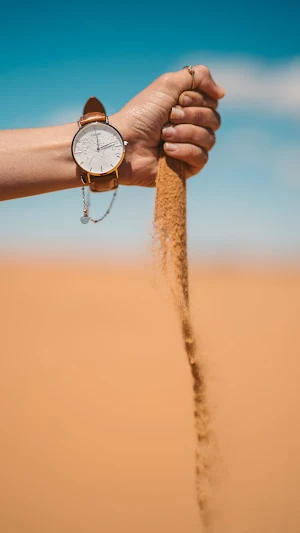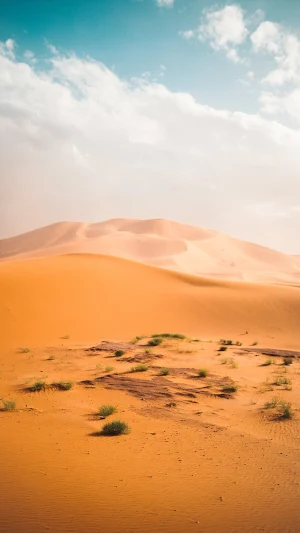







The desert is one of the main biome types on Earth. Desert is a term used for regions that receive less than 250 mm of annual precipitation.
Deserts are ecosystems, and the desert atmosphere's low humidity causes enormous temperature differences between day and night. Deserts can vary significantly in the amount of precipitation they receive. The time of rainfall is also unpredictable. Although the amount of organic matter in the soil is low in hot deserts, minerals are abundant. Even in the most developed, the vegetation is very sparse, and the earth is directly exposed to the sun's rays and wind. Both annuals and perennials are available, but cacti and Sahara Shrub are typical, with close to 400 plant species in the Arctic, with a limited number of plant species in Antarctica. These plants often have very small or no leaves to reduce water loss. Some plants live as underground organs and only have a short growth period when there is heavy rainfall.
Desert animals have to cope with extreme conditions: water and food are scarce, temperatures change dramatically, walking and digging burrows in the sand and thick snow are difficult. A wide variety of physiological and behavioral adaptations have evolved to overcome these problems. In hot deserts, most animals are small, spending the hottest hours of the day under plants or underground, hunting and foraging at night. Animals such as kangaroo rats maintained their vitality with the water (metabolic water) found in foods and produced due to metabolism. Its living biomass is very low, and the biota is highly specialized.
The world-famous deserts are the deserts around the Poles and the Great Sahara in North Africa, the Kalahari Desert in South Africa, the Gobi in Asia, and the Atacama Desert in South America. The Great Sahara is the largest hot desert in the world. Antarctica and most of Greenland are also included in the term desert, so the word "desert" is used not only for hot regions but also for cold and arid regions.
Deserts aren't just places where temperatures are high. For example, Antarctica is a cold desert. Unlike hot deserts, the prevailing climate creates an area covered only by ice because it is hard.
The reasons for the formation of deserts occur as a result of several factors. There are five types of deserts according to their formation reasons. These deserts are tropical deserts, continental deserts, coastal deserts formed by cold water currents, and cold deserts. Remember that we gave the continent of Antarctica as an example of cold deserts. The main factors in the formation of deserts are high pressure, cold water currents, and continentality. This situation is explained below.
Please choose your desired desert wallpaper and set it as a lock screen or home screen to give your phone an outstanding appearance.
We are grateful for your great support and always welcome your feedback about our wallpapers.
Between 1960 and 1975, customizers created a new vehicle concept, developing GM...
Samsung is a South Korean company founded in 1938 by Lee Byung-Chul....
Latin "Carnivora": meaning "meat-eaters." But actually, the carnivorous diet is not the...
If you have never seen snow before, you will discover paradise on...
A skeleton is a form of bones that are joined to each...
The military or army is a massively armed, highly coordinated force, predominantly...
Created with AppPage.net
Similar Apps - visible in preview.